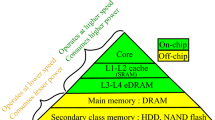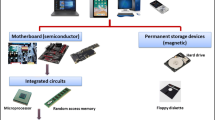Abstract
The spintronic properties of molecules are essential for the development of multifunctional organic spintronic devices. Here, the spin polarization of bis-(8-hydroxyquinoline) zinc (Znq2) molecule upon electron and hole injection has been theoretically studied by using density-functional theory calculations. It is found that both the injected excess electrons and holes are highly spin polarized in Znq2, leading to an approximately linearly increased magnetic moments with the amount of the charge injected. Our calculation also reveals that the spin polarization upon excess electron and hole injection may attribute to the exchange splitting of lowest unoccupied molecular orbital (LUMO)-related p states of N and C atoms of pyridyl rings and the highest occupied molecular orbital (HOMO)-related p states of O and C atoms of the phenoxide rings, respectively. The d0 ferromagnetism in the charge-injected Znq2 molecule is quite promising for organic spintronic devices.







Similar content being viewed by others
References
Van Slyke, S.A., Chen, C.H., Tang, C.W.: Organic electroluminescent devices with improved stability. Appl. Phys. Lett. 69, 2160–2162 (1996)
Xing, X., Zhang, L., Liu, R., Li, S., Qu, B., Chen, Z., Sun, W., Xiao, L., Gong, Q.: A deep-blue emitter with electron transporting property to improve charge balance for organic light-emitting device. ACS Appl. Mater. Interfaces. 4, 2877–2880 (2012)
Xu, X.: A brief review of ferroelectric control of magnetoresistance in organic spin valves. J. Materiomics. 4, 1–12 (2018)
Üngördü, A.: Charge transfer properties of Gaq3 and its derivatives: an OLED study. Chem. Phys. Lett. 733, 136696 (2019)
Pang, Z., Lin, L., Wang, F., Fang, S., Dai, Y., Han, S.: Magnetic properties of tris(8-hydroxyquinoline) iron: experimental and theoretical investigation. Appl. Phys. Lett. 99, 153306 (2011)
Dey, P., Rawat, R., Potdar, S.R., Choudhary, R.J.: A. Banerjee, Temperature driven transition from giant to tunneling magneto-resistance in Fe3O4/Alq3/Co spin valve: role of Verwey transition of Fe3O4. J. Appl. Phys. 115, 17C110 (2014)
Xiong, Z.H., Wu, D., Vardeny, Z.V., Shi, J.: Giant magnetoresistance in organic spin-valves. Nature. 6977, 821–824 (2004)
Baik, J.M., Shon, Y., Lee, S.J., Jeong, Y.H., Kang, T.W., Lee, J.: Electronic structure and magnetism in transition metals doped 8-hydroxy-quinoline Aluminum. J. Am Chem. Soc. 130, 13522–13523 (2008)
Lin, L., Pang, Z., Fang, S., Wang, F., Song, S., Huang, Y., Wei, X., Yu, H., Han, S.: Structure of Co-doped Alq3 thin films investigated by grazing incidence X-ray absorption fine structure and Fourier transform infrared spectroscopy. J. Phys. Chem. A. 115, 880–883 (2011)
Wang, F., Pang, Z., Lin, L., Fang, S., Dai, Y., Han, S.: Magnetism in Co-doped tris-8-hydroxyquinoline aluminum studied by first-principles calculations. Appl. Phys. Lett. 96, 053304 (2010)
Tarafder, K., Sanyal, B., Oppeneer, P.M.: Charge-induced spin polarization in nonmagnetic organic molecule Alq3. Phys. Rev. B. 82, 060413(R) (2010)
Hou, D., Qiu, J., Xie, S., Saxena, A.: Charge-induced spin polarization in thiophene oligomers. New. J. Phys. 15, 73044 (2013)
Ren, J.F., Zhang, Y.R., Zhang, L., Yuan, X.B., Hu, G.C.: Spontaneous spin polarization in rubrene studied by density functional theory calculations. Physica. E. 66, 299–302 (2015)
Guo, Z., Dong, Z., Zhu, R., Jin, S., Liu, B.: Synthesis and photophysical properties of complexes of Be(II) and Zn(II) with 10-hydroxybenzo[h]quinoline ligand. Spectrochim. Acta. A. 68, 337–340 (2007)
Shahedi, Z., Jafari, M.R., Zolanvari, A.A.: Synthesis of ZnQ2, CaQ2, and CdQ2 for application in OLED: optical, thermal, and electrical characterizations. J. of Mater. Sci: Mater. Electron. 28, 7313–7319 (2017)
Jafari, F., Elahi, S.M., Jafari, M.R.: A facile synthesis and optoelectronic characterization of Znq2 and Alq3 nano-complexes. Appl. Phys. A. 124, 574 (2018)
Ren, J., Yuan, X., Hu, G.: Spin polarization properties of Na doped meridianal tris(8-hydroxyquinoline) aluminum studied by first principles calculations. Chin. Phys. Lett. 31, 048502 (2014)
Perdew, J.P., Burke, K., Ernzerhof, M.: Generalized gradient approximation made simple. Phys. Rev. Lett. 77, 3865–3868 (1996)
Kresse, G., Joubert, D.: From ultrasoft pseudopotentials to the projector augmented-wave method. Phys. Rev. B 59, 1758–1775 (1999)
Ju, L., Xu, T., Zhang, Y., Sun, L.: Theoretical study on magnetism induced by H vacancy in isolated Alq3 and Gaq3 molecules. Mater. Res. Express. 4, 106103 (2017)
Monzon, L., Burke, F., Coey, JMD.: Optical, magnetic, electrochemical, and electrical properties of 8-hydroxyquinoline-based complexes with Al3+, Cr3+, Mn2+, Co2+, Ni2+, Cu2+, and Zn2+. J. Phys. Chem. C. 115, 9182–9192 (2011)
Deepshikha, P., Kumar, M.N., Singhal, R., Kandwal, P., Masram, D.T., Eugenia, R.M., Nagpure, I.M.: The modification in the photo–physical properties via transformation of synthetic dehydrated Znq2 to anhydrous (Znq2)4 tetramer by sublimation process. Opt. Mater. 82, 175–189 (2018)
Segall, M., Lindan, P., Probert, M., Pickard, C., Hasnip, P., Clark, S., Payne M.: First-principles simulation: ideas, illustrations and the CASTEP code. J. Phys. Condens. Matter. 14, 2717–2744 (2002)
Hosseini, S.M., Jashni, E., Jafari, M.R., Van, D., Shahedi, Z.: Nanocomposite polyvinyl chloride-based heterogeneous cation exchange membrane prepared by synthesized Znq2 nanoparticles: ionic behavior and morphological characterization. J. Membr. Sci. 560, 1–10 (2018)
Fatemeh, J., Mohammad, E.S., Reza, J.M.: A facile synthesis and optoelectronic characterization of Znq2 and Alq3 nano-complexes. Appl. Phys. A. 124, 574 (2018)
Cinchetti, M., Heimer, K., Wüstenberg, J., Andreyev, O., Bauer, M., Lach, S., Ziegler, C., Gao, Y., Aeschlimann, M.: Determination of spin injection and transport in a ferromagnet/organic semiconductor heterojunction by two-photon photoemission. Nat. Mater. 8, 115–119 (2009)
Nasyrov, K.A., Shaĭmeev, S.S., Gritsenko, V.A., Han, J.H., Kim, C.W., Lee, J.-W.: Electron and hole injection in metal-oxide-nitride-oxide-silicon structures. J. Exp. Theor. Phys. 102, 810–820 (2006)
Bottegoni, F., Zucchetti, C., Isella, G., Bollani, M., Ciccacci, F.: Spin-charge interconversion in heterostructures based on group IV semiconductors. Riv. Nuovo. Cimento. 43, 45–96 (2020)
Kisoo, K., Kihyon, H., Sungjun, K.: Doping mechanism and electronic structure of alkali metal doped tris(8-hydroxyquinoline) aluminum. J. Phys. Chem. C. 116, 9158–9165 (2012)
Yuan, H., Jiang, F., Xie, W., Zhang, X., Pang, Z., Han, S.: Spin polarization in diamagnetic tris(8-hydroxyquinoline) cobalt induced by nonmagnetic metal Al. Comput. Theor. Chem. 1069, 36–39 (2015)
Acknowledgements
The authors are grateful for the financial support from the National Natural Science Foundation of China (No. 11874237) and the Major Program of Shandong Province Natural Science Foundation (No. ZR2019ZD43). We also thank the National Supercomputer Center in Jinan for providing high performance computation.
Author information
Authors and Affiliations
Corresponding authors
Additional information
Publisher's Note
Springer Nature remains neutral with regard to jurisdictional claims in published maps and institutional affiliations.
Rights and permissions
About this article
Cite this article
Yuan, H., Zhang, H., Yuan, X. et al. Effect of Electron and Hole Injection on Spin Polarization in Bis-(8-hydroxyquinoline) Zinc Molecule. J Supercond Nov Magn 35, 455–461 (2022). https://doi.org/10.1007/s10948-021-06077-5
Received:
Accepted:
Published:
Issue Date:
DOI: https://doi.org/10.1007/s10948-021-06077-5




